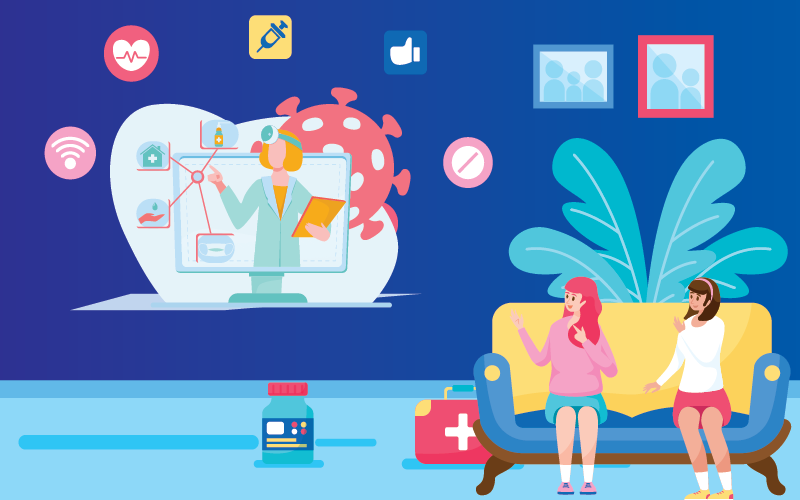Virtual healthcare refers to “virtual visits” between patients and clinicians that take place through communications technology — the video and audio connectivity enables “virtual” meetings to take place in real TimeTime, virtually any location.
What Exactly Is Virtual Healthcare?
A so-called videoconference between a doctor and a patient at a residence can be considered a virtual visit. Instead of traveling to another city, patients can interact with an offsite medical specialist via a high-definition conference hook-up at their local clinic. It may also make it simpler for patients to find qualified second opinions online.
So far, virtual healthcare has been used primarily for meetings and consultations, check-ins, and status reports rather than in-depth diagnoses or treatments. Nonetheless, as technology advances, more severe conditions such as diabetes are coming under the influence of virtual healthcare.
Virtual healthcare further enables specialists to monitor situations or procedures remotely. Home patient monitoring has also been beneficial in treating patients with chronic conditions such as diabetes and hypertension, where rehospitalization are all too familiar owing to a lack of communication or transparency about the patient’s condition.
How Is Virtual Healthcare Distinction from Telehealth?
Virtual healthcare, like remote patient management, is a term that is occasionally used interchangeably with telehealth or telemedicine — but they are not the identical thing. Virtual healthcare is a subset of telehealth, a broader term encompassing all remote or technology-driven healthcare.
Telehealth is a broad category of solutions that serve patients at a distance. So it could be doctor visits at a distance, chronic condition management, or high-risk pregnancy management, but doing this from a distance, remotely.
Telehealth technology can take the form of a phone, videoconferencing capability, or an IVR system. Telehealth technology could be a phone, videoconferencing capability, or an IVR system. It encompasses all of the different types of technologies, but the concept is that you’re using these technologies to gather and exchange data. After implementation, patient demand for virtual healthcare tends to translate into satisfaction.



